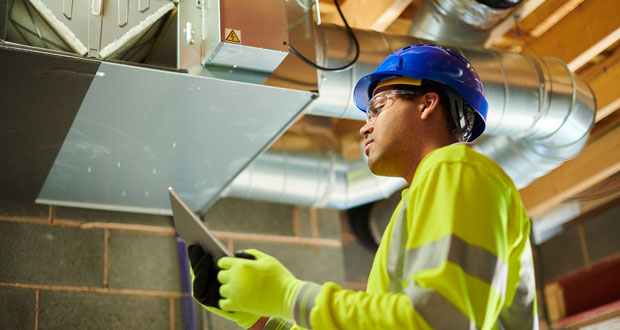 With maintenance costs on the rise, Jill Wood, Managing Director at Signum FM, explains why neglecting maintenance tasks to save money in the short-term isn’t the solution
With maintenance costs on the rise, Jill Wood, Managing Director at Signum FM, explains why neglecting maintenance tasks to save money in the short-term isn’t the solution
It seems every day brings with it another new headline about rising costs and supply chain issues and, for the world of facilities management, it’s no different.
According to the Building Cost Information Service (BCIS), maintenance costs rose seven per cent last year and are predicted to increase by a further 4.5 per cent during 2023, with the rising costs of labour and materials being the key drivers.
As businesses continue to navigate the challenges of recent years, and today’s high inflation, energy costs and economic uncertainty, increased costs for maintaining assets are only placing organisations under even more pressure.
For many, this means there may be a real temptation to put off routine maintenance tasks when it comes to property management, in favour of saving money.
However, the costs saved by making short-term fixes, patch repairs, or even ignoring issues completely are likely to be outweighed further down the line when bigger, more expensive repairs inevitably become necessary.
A preventative strategy to keep maintenance and repair duties fulfilled throughout the year is essential and can help conserve budgets later down the line.
UNDERSTAND YOUR ASSETS
The best place to start is to conduct a thorough assessment to determine the condition of all assets and, from this, to put in place a programme of planned maintenance and repairs that maximise the existing budget.
We would always advise to start with the areas that have an obvious impact on business continuity and health and safety. For example, heating and cooling systems, electrical, security and fire compliance requirements.
Understanding and monitoring the condition of these assets allows businesses to maximise their budgets both now and in the future.
For example, we’ve recently worked with a client whose boiler was more than 20-years-old.
But, as they had invested in regular servicing and maintenance over the years, rather than just ticking the compliance box annually, the boiler was in good working order – saving them the much bigger cost of purchasing a replacement system.
In my view, building maintenance can be looked at as a three-pronged approach: Planned preventative maintenance (PPM), repairs and improvements.
Your strategy should cover all these areas and, while the latter may seem like a ‘nice-to-have’ when budgets are under pressure, investing now in improving assets where needed will always pay dividends in the long-run.
In fact, industry studies have shown that, on average, those who implement a planned preventative maintenance regime can make cost savings of between 30 and 40 per cent.
FUTURE PLANNING
However, investing now not only saves costs further down the line – it also allows businesses to make more informed decisions about future projects and investments.
A good example of this is sustainability – a topic that is high on the agenda for many businesses already, but is only going to become more important in years to come.
Businesses are undoubtedly going to need to invest in more sustainability initiatives and property adaptations, from energy use through to heating and air conditioning requirements as the climate continues to change.
And, of course, all of this will cost money.
Building these initiatives into the business plan and making sure you’re not cutting corners on today’s maintenance tasks in order to save cash in the short-term means budgets can be put to better use in the future, creating bigger, more meaningful changes rather than addressing problems that could have been easily avoided or minimised much sooner.
REAPING THE REWARDS
Aside from budget management, it’s important to also remember the responsibilities that building owners and their tenants have for the people who work there.
Statutory requirements exist to protect these people and to ensure that a building is fit to work from. It’s essential to understand what these requirements are for each industry and what liabilities lie with either the tenant or the landlord – neither of which should be neglected.
The environment of the workplace also contributes to the health and wellbeing of the workforce and, in turn, employee productivity. It’s therefore astonishing to see some organisations neglecting general maintenance and repairs because of budget issues, putting the people who use the buildings at risk.
For example, the National Audit Office recently revealed a major issue within schools, with an estimated 700,000 children being educated in structures requiring ‘major fixes’.
This makes for uncomfortable reading but, as maintenance costs rise, so too will the problem if organisations choose quick-fixes or patch repairs over a more proactive and strategic approach.
A programme of planned maintenance holds countless benefits, creating a comfortable environment to give workers of all ages a real boost, helping to decrease workplace claims and allowing for more informed forward planning for the future.





